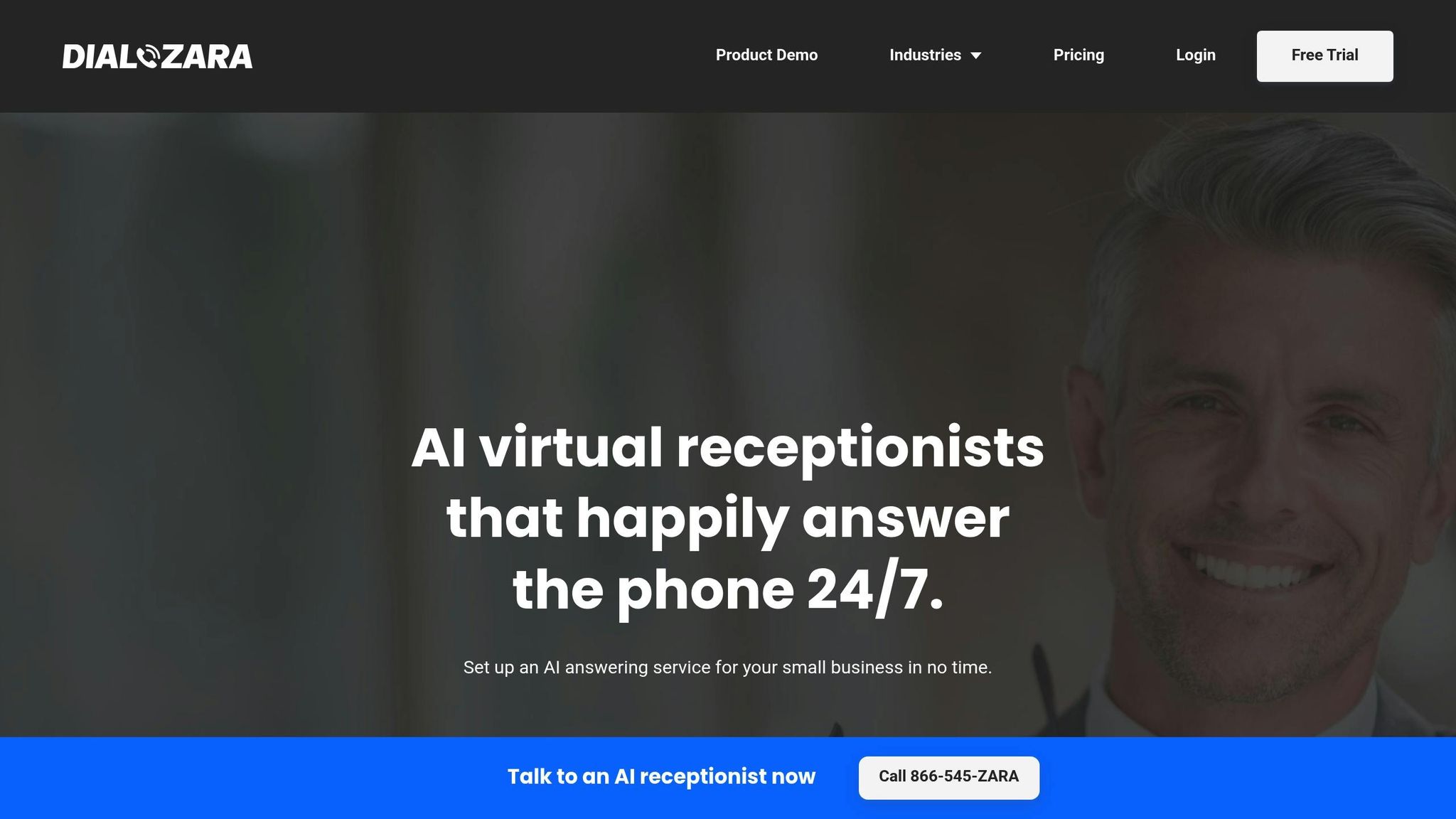Evaluating NLP Models for Industry Jargon

NLP models often struggle with industry-specific jargon, which can lead to misinterpretations or inaccurate responses. This article explores how to evaluate and improve NLP systems to handle specialized language effectively. Here's a quick summary:
- Challenges with Jargon: General-purpose models fail to grasp nuanced terms like "tort" in legal contexts or "verbal contract" in real estate.
- Key Testing Areas:
- Terminology Accuracy: Recognizing and understanding industry-specific vocabulary.
- Contextual Understanding: Correctly interpreting terms in various scenarios.
- Response Appropriateness: Providing relevant replies using proper terminology.
- Adaptation Capability: Learning new terms as industries evolve.
- Evaluation Metrics:
- Precision, Recall, F1 Score for term recognition.
- Context Accuracy Score, Response Relevance Rating, and Domain Adaptation Index for specialized performance.
- Testing Methods:
- Data split testing with industry-specific datasets.
- Expert reviews for assessing contextual understanding.
- Live testing to measure real-world performance and adaptability.
- Improvement Strategies:
- Train with industry documents, call scripts, and updated content.
- Focus on continuous learning and contextual understanding.
- Address imbalanced datasets and refine thresholds for accuracy.
Main Evaluation Metrics
When NLP models handle specialized industry language, using the right evaluation metrics is key. These metrics help ensure accuracy and high-quality responses.
Core Performance Metrics
Standard metrics are used to measure how well the model performs:
| Metric | Description |
|---|---|
| Precision | The percentage of correctly identified industry terms among all terms flagged as jargon. |
| Recall | The percentage of industry terms correctly identified out of all actual industry terms. |
| F1 Score | The harmonic mean of precision and recall, providing an overall measure of accuracy. |
For example, in legal contexts, it’s not enough for a model to recognize terms like tort or statute. It must also understand their specific meanings and how they differ. Specialized metrics take this evaluation a step further.
Industry-Specific Measurements
These metrics assess how effectively a model handles specialized language:
- Context Accuracy Score: Evaluates how well the model applies terminology in practical scenarios.
- Response Relevance Rating: Checks if the model uses specialized language appropriately in its responses.
- Domain Adaptation Index: Measures how quickly and effectively the model integrates new industry terms as they emerge.
These metrics ensure the model performs well across different business settings. For instance, Dialzara uses advanced AI that learns new terminology through regular interactions and client feedback.
Text Generation Scores
Evaluating content quality requires additional scoring systems:
-
BLEU Score Analysis
- Examines word choice accuracy
- Assesses phrase structure
- Checks the correct use of industry-specific terms
- Measures overall coherence
-
ROUGE Score Implementation
- Reviews summary quality
- Ensures responses are complete
- Tests precision in terminology
- Evaluates contextual relevance
These methods ensure AI-generated content meets professional standards while accurately reflecting specialized language. Continuous evaluation and fine-tuning help maintain and improve performance, keeping the model aligned with industry needs.
Testing Methods
These testing methods are designed to directly evaluate how well the model uses industry-specific language in practical applications.
Data Split Testing
Dividing the dataset into training, validation, and test sets is key to evaluating the model's ability to handle specialized terms. This method ensures the model is exposed to a variety of industry-specific language patterns. By analyzing its performance across these segments, strengths and weaknesses become clear. To refine this process, industry experts review how the model manages specialized terminology, offering deeper insights.
Expert Review Process
Industry professionals are essential in evaluating the model's understanding of specialized language. They focus on how well the model interprets and responds to specific terms. Through systematic reviews, experts assess the model's contextual understanding, pinpoint training gaps, and suggest targeted improvements to enhance its performance.
Live Testing Results
Live testing goes beyond controlled environments to assess how the model performs in actual scenarios. A/B tests compare performance metrics, while live evaluations track how the model adapts to new terms, measures response accuracy, and benchmarks improvements. Reviewing call records provides additional clarity, ensuring the model consistently processes specialized terminology with high accuracy in real-world applications.
sbb-itb-ef0082b
Customizing NLP Models
Fine-tune NLP models to align with industry-specific language using targeted data, adjustments, and thorough testing.
Training with Industry Data
- Upload relevant documents: Include materials rich in industry-specific terms.
- Incorporate real-world examples: Use call scripts and recordings to reflect natural language patterns.
- Add website content: Include pages with detailed industry-related information.
- Keep the knowledge base current: Regularly update with new terms and phrases.
Building a strong, specialized data set lays the foundation for adjusting your model to better understand your industry.
Methods for Adjusting Models
- Continuous Learning: Improve through every interaction.
- Pattern Recognition: Detect communication styles unique to your industry.
- Contextual Understanding: Combine general language comprehension with industry-specific details.
"Powered by the most advanced AI models available, Dialzara continuously learns and adapts to new terminologies, client feedback, and interaction patterns to its service over time."
– Dialzara
Testing and Evaluating Changes
Once your model is updated, conduct rigorous testing to ensure it performs better. This step confirms its ability to handle industry-specific language effectively.
Key metrics to track:
- Baseline comparison: Measure accuracy improvements in recognizing industry terms.
- Context validation: Check how well the model applies terms in different scenarios.
- Response evaluation: Analyze the quality and relevance of replies.
Regularly review these metrics to identify areas for further refinement.
Common Issues and Solutions
Evaluating NLP models for industry-specific language reveals several challenges that can impact their performance.
Uneven Data Distribution
Industry jargon often leads to imbalanced datasets where certain terms are overrepresented, while others are rare.
Here’s how to tackle this:
- Create more examples for terms that appear less frequently, using different contexts to ensure variety.
- Assign greater importance to rare terms during training to improve the model's ability to recognize them.
- Regularly review term frequencies and adjust the training data to maintain a better balance.
Accuracy Trade-offs
In customer service, both false positives and false negatives can hurt the quality of interactions. Striking the right balance is essential.
Consider these strategies:
- Context matters: Look at the broader conversation to interpret terms more accurately.
- Set thresholds carefully: Define recognition levels based on what your industry needs.
- Monitor performance: Continuously track accuracy metrics to spot areas for improvement.
These steps help ensure the model aligns with practical needs while minimizing errors.
Test Data Variety
Effective testing requires a mix of examples that reflect real-world scenarios, including different communication styles, contexts, and user expertise levels.
Drawing from diverse sources ensures the model captures the nuances of industry language:
| Data Source | Purpose | Impact |
|---|---|---|
| Documents | Define a baseline for formal terms | Improves recognition of standard terminology |
| Recordings | Reflect natural speech patterns | Enhances handling of conversational language |
| Web Content | Incorporate current industry language | Keeps the model updated with new terminology |
Addressing these issues lays the groundwork for fine-tuning NLP models tailored to specific industries.
Summary and Implementation
Key Testing Methods
Evaluating NLP models in practical scenarios ensures they can handle industry-specific language effectively.
| Evaluation Phase | Key Components | Expected Outcome |
|---|---|---|
| Initial Training | Industry documents, call scripts, recorded conversations | Basic understanding of sector-specific terms |
| Validation | Expert reviews, performance metrics, accuracy tests | Confirmation of comprehension and response quality |
| Live Testing | Real-time call handling, customer feedback analysis | Testing interaction capabilities in real-world settings |
Using these phases as a foundation, Dialzara tailors its language processing to meet the demands of various industries.
Dialzara's Industry Language Processing

Dialzara’s AI phone agents highlight how specialized NLP evaluation can be applied to real-world use.
Recent stats show that 60% of online users prefer calling local businesses, yet only 38% of those calls are answered. Dialzara bridges this gap by offering 24/7 availability with AI agents trained in industry-specific language.
Here’s how Dialzara achieves this:
- Continuous Learning: The system refines its understanding by analyzing calls and customer feedback, keeping up with new terms and trends.
- Custom Knowledge Base: Businesses can upload their own materials to improve the AI's ability to understand their specific needs.
- Expert Support: Human specialists work with businesses to fine-tune the AI’s performance for better results.
"I've found Dialzara to be incredibly efficient and authentic", says Bobby James Fournier.
Combining technical accuracy with a conversational tone allows automated systems to handle complex terminology while delivering a smooth customer experience.
Summarize with AI
Related Posts
Custom AI Models for Industry-Specific Jargon
Custom AI models enhance accuracy and efficiency in industry-specific tasks, driving productivity and cost savings across sectors.
How to Train NLP Models with Domain-Specific Data
Learn how to effectively train NLP models with domain-specific data to enhance accuracy and efficiency in specialized fields.
Fine-Tuning LLMs with Small Data: Guide
Learn how fine-tuning large language models with small datasets can enhance industry-specific AI tools for better customer service and efficiency.
How to Measure AI Agent Performance
Learn how to effectively measure AI agent performance using key metrics to ensure efficiency, customer satisfaction, and business impact.
